What is fiscal stimulus?
Fiscal stimulus is a term for tax cuts or new government spending that increase aggregate demand. Almost any deficit-increasing policy—reduced corporate taxes, more generous food stamps, added infrastructure spending—can stimulate demand, but the precise impacts depend on the structure of the package and the timing. For example, tax cuts aimed at the poor can boost the economy more in the near-term than tax cuts for the rich because the poor tend to spend a higher percentage of what they receive than the wealthy. In contrast, a decision today to build a new nuclear submarine five years in the future won’t have much effect on demand in the short-term at all.
When is fiscal stimulus warranted?
Fiscal stimulus can be helpful when unemployment is high and economic output is less than its potential. When the economy is at full employment, or close to it, fiscal stimulus is more likely to lead to higher prices than to higher output. In that case, the Federal Reserve is likely to raise interest rates to keep higher government spending or lower taxes from producing an unwelcome increase in inflation.
Does it make sense right now?
The current unemployment rate in the U.S. (4.7%) is near what economists think of as “full employment”, and GDP growth in 2016 likely was close to what many economists think of as its potential rate (1.8 to 2.0%), roughly defined as the rate at which the labor force grows plus the rate at which productivity (output per hour of work) grows. As a result, the U.S. does not appear to require additional stimulus right now. At least, that was Chair Yellen’s take at the Federal Reserve’s December 2016 press conference. When asked about fiscal stimulus, she said that it was “not obviously needed,” given the “solid labor market.”
Other Fed officials have made similar comments since Donald Trump’s election brought more talk of stimulus. For instance, Loretta Mester, president of the Federal Reserve Bank of Cleveland, said earlier this month that “I think we’re basically at full employment… and I think that inflation is going to be moving back up to 2 percent over the next couple of years. So I don’t see a need of the kind of fiscal policy just to stimulate aggregate demand….”
How about spending on public investment?
The Fed clearly would prefer that any fiscal expansion be aimed at increasing the long-run potential growth rate. John Williams, president of the Federal Reserve Bank of San Francisco, recently stated: “Today I don’t think we need short-term fiscal stimulus. What we need is really better policies and investments in the long-term health of the economy.” Increased government spending on investment—bridge projects, scientific research, education—raises the level of future GDP, whereas spending on consumption does not. So as Williams suggests, even when fiscal stimulus doesn’t make sense for near-term support for the economy, increased spending on public investment might. (For a Hutchins Center explainer on public investment, see here.)
As Governor Lael Brainard said at the Hutchins Center recently:
Changes in fiscal policy that raise the level or growth rate of productivity or that induce greater labor force participation and higher levels of skill and education in the workforce raise the nation’s productive capacity and result in more sustainable increases in output and living standards. The higher productivity and workforce levels engendered by these policies would likely increase investment opportunities and raise expectations of future income growth, sustainably boosting the levels of investment and consumption and, as a result, the longer-run neutral rate. Such policies are more likely to be sustainable because the boost to GDP that they provide continues to accumulate over time, limiting increases in the debt-to-GDP ratio and preserving fiscal space. [Fiscal space is how much more debt a government can take on before it runs into trouble.]
Some economists, such as Douglas Elmendorf, dean of the Harvard Kennedy School of Government, and Louise Sheiner—one of the authors of this post—have argued that now is a particularly good time for the government to undertake more investment because interest rates are so low, which makes borrowing to finance that investment much cheaper.
Is Federal Reserve interest rate policy likely to respond differently to tax cuts and spending increases if they are largely aimed at increasing investment as opposed to consumption?
It is entirely possible that the Fed could respond the same way to two packages that look quite different—one aimed at stimulating aggregate demand in the short term, and one aimed at improving the economy’s growth potential in the long run—because government spending intended to boost the economy’s productive capacity in the long run will generally also increase short-run aggregate demand. Government spending acts as fiscal stimulus whether the government is buying food or a supercomputer that may lead to scientific breakthroughs and greater growth potential.
More generally, whether the Federal Reserve will increase interest rates in response to a fiscal stimulus package depends on both the timing of the effects and the magnitude of those effects. Inflationary pressures come from increases in aggregate demand not met by increases in aggregate supply. So if President Trump and Congress fashion a tax-and-spending package that increases both demand and supply by the same amount at the same time, that wouldn’t be inflationary. The Fed would not respond by raising interest rates. But such a policy would be unusual. Most investments take time to build and time to bear fruit. Consider the time it takes to develop a new air traffic control system and the time it takes for airlines to adapt to it, or the lag between improved education funding and a more skilled workforce.
If fiscal stimulus means tighter monetary policy in the short term, is there any reason to do it?
Spending increases and tax cuts would lead to greater deficits, and thus to an increase in the national debt. A larger debt, among other impacts, could make it harder for the federal government to borrow still more to provide fiscal stimulus during the next downturn. But a deficit-widening package of spending increases and tax cuts probably would lead the Federal Reserve to raise rates more than it otherwise would, and that would give it more room to cut rates in a downturn. In effect, fiscal space would be traded for monetary policy space.
It is not clear that is a tradeoff worth making. The Federal Reserve typically responds more quickly in a crisis than fiscal policymakers can, but monetary policy’s impacts on the real economy are felt over time—possibly more slowly than a tax cut’s effects, for example. And it is not obvious that this is how members of Congress of the Trump administration conceptualize the current situation. Those contemplating looser fiscal policy do not appear to have recharging the Federal Reserve’s battery as their aim.
If the Fed senses a fiscal package is likely, would it act preemptively, given that monetary policy affects the economy with lags?
With monetary effectiveness lags on the order of a year to a year and a half, the Fed may not want to risk waiting until Congress passes tax or spending bills. Once the magnitude and direction of policy become clearer, they will likely include it in their baseline and react to it. (In fact, some Fed policymakers have already built in at least a little fiscal stimulus in their forecasts.) On the other hand, most fiscal policies will also take time to have an economic effect, so the Fed may have room to wait even if passage of legislation is imminent.
One judgment the Fed must make in the short term is whether it thinks the market’s expectations of fiscal stimulus are justified. The Fed’s forecasts are based, in part, on consumer and business sentiment as well as on the level of the stock market, long-term interest rates, and the dollar, each of which respond in anticipation to changes in fiscal policy. Indeed, consumer confidence and the stock market have risen substantially since Mr. Trump’s victory, and, if those effects persist, they can boost the pace of economic growth even before tax cuts or spending increases take effect. That could prompt the Fed to raise rates sooner. On the other hand, if the Fed decides that the markets are on a “sugar high” (an argument Harvard’s Larry Summers has made), then it will discount market movements as transitory, and won’t respond as strongly to them.
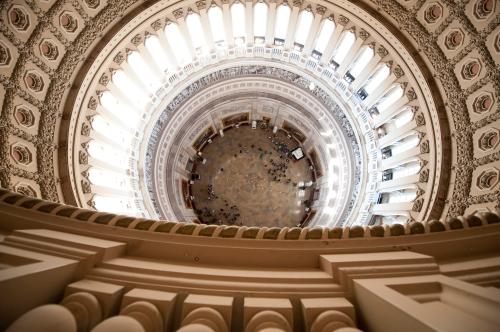
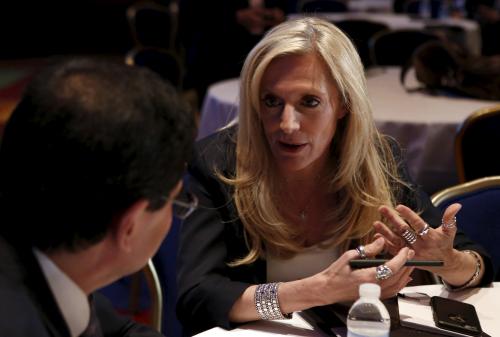
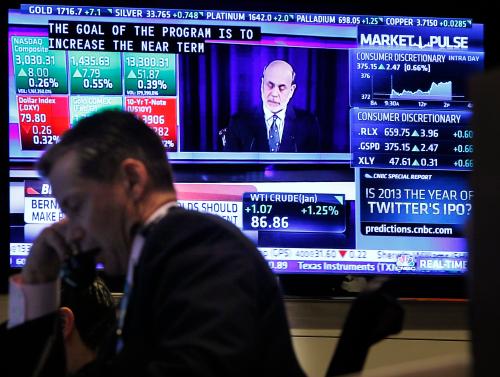
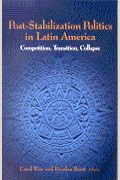

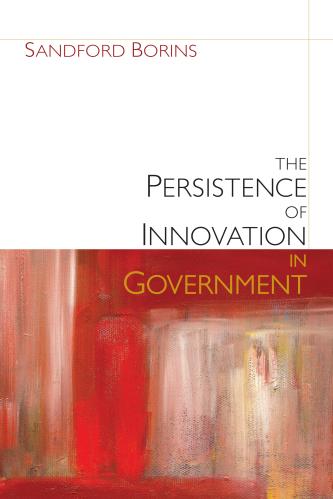



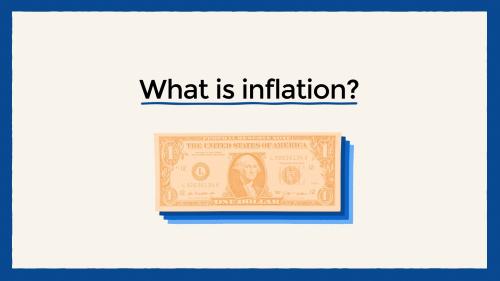

Commentary
The Hutchins Center Explains: Fiscal stimulus and the Fed
January 26, 2017